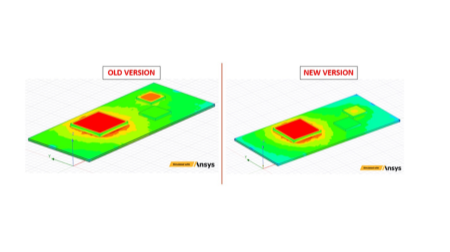In the rapidly evolving landscape of embedded systems and electronics, the challenges posed by thermal issues in the embedded industry have reached a critical point.
Imagine a world where every device, from smartphones to autonomous vehicles and industrial control systems, is deeply linked with embedded processors that deliver exceptional performance and intelligence. While this vision is becoming a reality, it comes with a formidable adversary: heat.

Embedded processors, once relegated to the confines of desktop computers, have undergone a transformation.
They have shrunk in size, expanded in computational power, and infiltrated nearly every aspect of our lives: as seen in the image below, the power density has increased exponentially.

(Power density prevision in early 2000 for a single core at constant clock frequency trend)
However, this remarkable progress has brought with it a formidable obstacle: the relentless generation of heat within these compact powerhouses. Today, the thermal challenges in embedded processors have escalated to a point where they demand urgent attention and innovative solutions.
HOW TO APPROACH THERMAL ISSUES
Thermal issues force engineers to find new solutions to cooling systems, in order to avoid heavy complications on electronic devices.
At Engicam, we approach the problem at every step that leads to the creation of a new board/module:
- Component selection: lower power consumption and higher efficiency result in lower heat generation, while still achieving the required specifications.
- Component placement: components are organized on the board to optimize airflow and minimize heat buildup
- Placement of high-power components away from each other to avoid concentrated heat sources. Furthermore, when possible, the components are positioned in such a way as to facilitate the assembly of the heatsink on the most important heat sources.
- PCB design: multilayer PCBs with dedicated power and ground planes for efficient heat dissipation and reduced electromagnetic interference (EMI). Use copper pours on PCB to dissipate heat more effectively, along with thermal channels that allow heat to be conducted away from critical areas.
- Software optimization: firmware implementation and software algorithms for thermal management. Furthermore, design mechanisms for thermal throttling, which temporarily reduces processor performance to prevent overheating.
- Mechanic dissipation: design of more efficient thermal dissipation systems through the use of simulation software and operational tests.
HEATSINK DESIGN
A correct electronic design can greatly facilitate heat dissipation, but in most cases, it is not sufficient: when talking about high-performance processors, the use of external dissipation systems is mandatory.
At Engicam, with our new mechanical department, we have started to develop new dissipation systems and to improve the old ones: for example, a new design on SOM i.Core MX8M Plus and its heatsink, lowered the operating temperature of the module by more than 12 degrees.
These results were achieved through a careful redesign in every aspect: from the PCB to the heatsink. During all these steps, the possibility of simulating the results obtained from the redesign, before even making the samples was fundamental, thus saving a lot of time and money: ANSYS Icepak allowed us to evaluate the benefits resulting from the changes made rapidly.
Below we see the results of two simulations carried out on the same board (with SOM i.Core MX8M Plus) before and after a PCB redesign: more optimized temperature distributions on the module and components surface are highlighted.

(Ansys Simulations)
In the image below the orange and blue curves represent the temperature trend during the stress test with the old heatsink.
In the first half, the processor works at LINUX idle mode; in the second half, it's stressed with the stress test process running. There are 2 curves because two are the measure points inside of the i.Core MX8M Plus CPU.
Then yellow and grey curves show the temperature trend of the improved heatsink in the same conditions: we can clearly see the temperature difference at steady state.
Likewise, the different behavior during transients is noted: the new heatsink absorbs power peaks better, raising the temperature more gradually compared to the previous version.

(StressTest i.Core MX8M Plus)
Thermal issues in embedded electronics are a very “hot” topic nowadays and it’s a crucial point to be considered since the first design steps of a new system.






